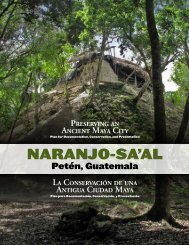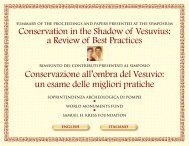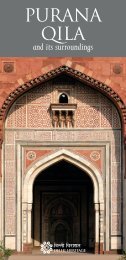2008 Annual Report - World Monuments Fund
2008 Annual Report - World Monuments Fund
2008 Annual Report - World Monuments Fund
Create successful ePaper yourself
Turn your PDF publications into a flip-book with our unique Google optimized e-Paper software.
Cultural Legacy<br />
<strong>World</strong> <strong>Monuments</strong> <strong>Fund</strong> has a long legacy of protecting singular monuments that<br />
represent great beauty, symbolize a cultural era, or express a particular period of artistic<br />
expression. These are sites of universally recognized importance, where we are often the<br />
catalyst bringing together financial resources and expertise to implement the most effective<br />
conservation measures.<br />
Capacity Building<br />
We focus on more than just the physical aspects of restoration. It is becoming ever<br />
more apparent that cultural heritage can be used to advance economic development<br />
through tourism. Our capacity-building program helps local communities build the<br />
governmental, financial, and technical infrastructures needed to preserve, protect, and<br />
sustain their heritage sites. We assemble teams of specialists to assist in designing the<br />
overall preservation strategy, conduct pilot projects, develop training programs, organize<br />
workshops, and plan for productive long-term use. Our objective is to give our partners<br />
the capacity to practice sustainable conservation on their own. We assess, document, plan,<br />
advise, and, most importantly, start the process through demonstration projects that can be<br />
continued locally.<br />
Workers remove a capstone<br />
from the Churning of the Sea<br />
of Milk gallery at Angkor Wat,<br />
Angkor Archaeological Park,<br />
Cambodia. The reconstruction<br />
of this gallery will provide<br />
valuable lessons about how<br />
to preserve the rest of this<br />
complex monument.<br />
The November <strong>2008</strong><br />
inauguration of Juanqinzhai<br />
(see page 22) in the<br />
Forbidden City, Beijing,<br />
China, marked the<br />
completion of the first<br />
phase of a long-term<br />
partnership with the Palace<br />
Museum to restore the<br />
Qianlong Garden. Pictured<br />
here is the Qianlong<br />
Emperor’s private theater.<br />
3
















